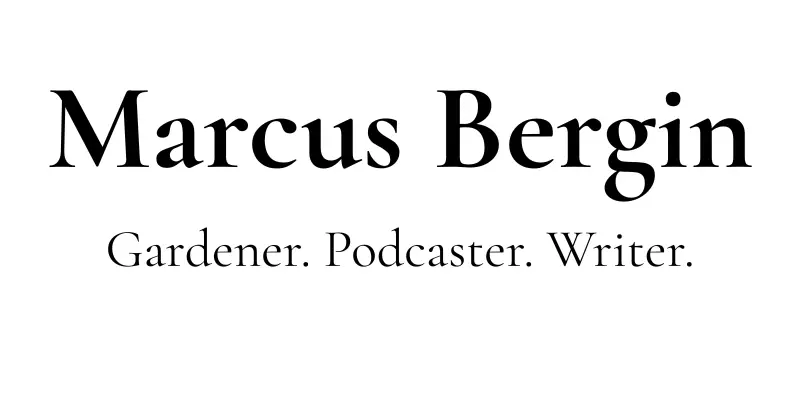Weed Fabric Struggles: Why I Stopped Using It (and What I Do Instead)
An honest look at the downsides of landscape fabric — and better ways to build a healthy, weed-resistant garden.
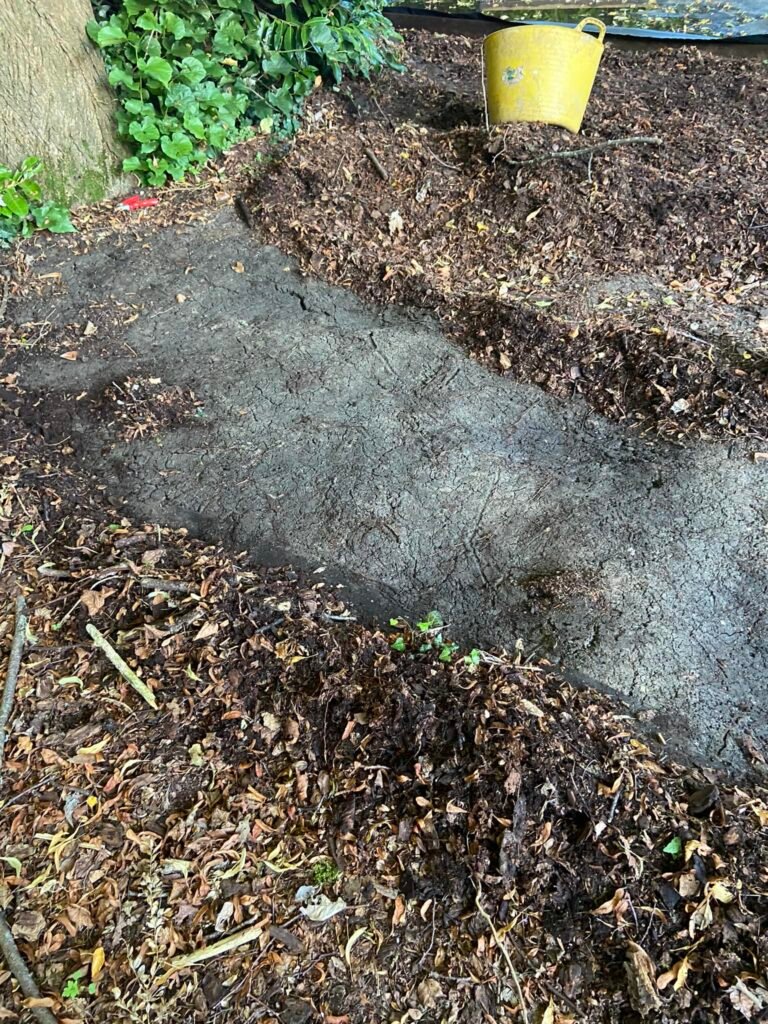
The Promise of a Quick Fix
I remember the day I first laid weed fabric like it was yesterday. A warm spring afternoon, the borders freshly cleared, the ground raked smooth, and a sense of order humming in the air. I rolled it out in crisp, even rows — a neat black barrier between me and the chaos of weeds. It felt, for a fleeting moment, like I had outsmarted nature.
Mulch on top, job done. No more dandelions mocking me from the borders. No more bindweed tangling around my perennials. Just clean lines and quiet soil.
Or so I thought.
Because here’s the truth I learned the hard way: weed fabric isn’t the miracle it’s made out to be. In fact, in most home gardens — especially in shady spaces where soil health really matters — it can cause more harm than good. The weeds do come back, just sneakier. The fabric shifts, tears, traps moisture, and becomes a magnet for frustration.
This post isn’t about finger-pointing or shame — we’ve all looked for an easier way to garden. It’s about sharing what happens after the initial illusion fades. About why I no longer use weed fabric in my borders — and what I do instead to keep the weeds down, the soil thriving, and the plants happy.
If you’ve struggled with weed fabric, or you’re wondering whether to try it in your own garden, read on. There are gentler, more effective ways to work with the garden — and they begin with understanding what’s really going on beneath the surface.
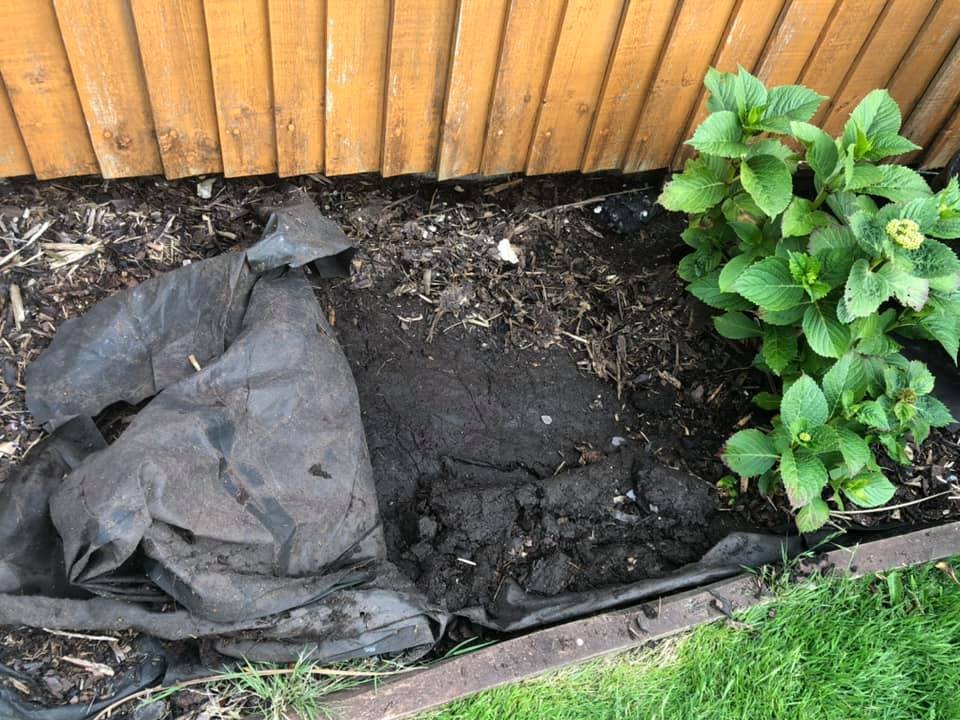
What Goes Wrong with Weed Fabric
Weeds Always Find a Way
At first, it feels foolproof. You lay the fabric, cut tidy crosses for your plants, pin down the edges, and cover the whole thing with a generous layer of mulch. It looks neat. It looks controlled. And for a little while, it even works.
But nature doesn’t play by our rules.
What no one tells you is how quickly weeds adapt. They don’t charge up from below in defiance — they sidle in. Wind-blown seeds nestle into the mulch on top. Soil and debris slowly build into a layer rich enough for new seedlings to thrive. You’ve essentially created a weed-friendly bed on top of your barrier.
And that fabric? It doesn’t stop them. Creeping buttercup finds a seam. Bindweed slips through the smallest hole. I’ve seen docks push their way up through two layers like it was barely there.
Even more frustrating, some weeds don’t sprout from above — they sneak in from the sides. Unless your fabric is sealed perfectly (and let’s be honest, it never is), those edge gaps become highways for opportunistic roots.
And what do you do when they arrive? You can’t just pull them. You tug and snap the top growth, but the root stays put, buried and smug beneath the barrier. You can’t reach it without tearing up the fabric or digging awkward holes. It becomes a game of whack-a-mole with no satisfaction.
So yes — weeds always find a way. And when they do, they’re harder to manage than ever. Which begs the question: was it ever really worth it?
When Weeds Do Break Through, They’re Worse
If you’ve ever tried to pull a deep-rooted weed that’s threaded itself through landscape fabric, you’ll know the particular kind of frustration it brings. It’s not just a battle — it’s a siege.
Those roots don’t just rest politely beneath the surface. They push down through the holes in the fabric, anchoring themselves firmly into the soil below. What you see above ground is just the tip of the problem. When you go to pull it, all you get is the top — a few leaves, maybe a bit of stem. The rest? Still there. Still growing. Still planning its next move.
And the more you pull, the more you disturb the mulch or soil layer on top, exposing even more space for new weeds to settle. It becomes a vicious cycle — one where every attempt at tidying up only makes things worse. You can’t fork them out properly. You can’t hoe. You’re left grappling blindly, often damaging the plants you do want to keep.
In one particularly maddening case, I remember trying to remove a bramble that had rooted through fabric under a mature shrub. It had woven itself not just through the fabric, but around the roots of the plant itself. I had to choose: leave the bramble, or risk disturbing the entire shrub to get to it. Neither option felt like winning.
And there’s something about weed roots entangled with fabric that seems to give them extra resilience — almost as if they know they’ve got the upper hand. They’re not going anywhere unless you rip the whole thing up. And by then, you’ve got a bigger job than if you’d never used the stuff in the first place.
So while weed fabric might delay your weed problem, it doesn’t solve it. It hides it — until it’s worse, more entangled, and much harder to deal with.
Planting Becomes a Nightmare
At first glance, planting through weed fabric seems straightforward. Cut a little cross, fold back the flaps, dig your hole, pop in the plant, tuck it all back in. Job done.
But the reality? It’s clumsy, awkward, and quickly becomes a chore — especially when you’re working in a well-mulched bed or trying to squeeze something into an established border.
First, you have to push aside the mulch — which, by this point, may have settled into a dense layer or mixed with soil on top. Then you’re cutting through fabric that’s either too flimsy to hold shape or so tough it resists your trowel like a tarpaulin. And then comes the real problem: what do you do with the spoil from the hole?
Normally, you’d work it into the surrounding soil, blend in a bit of compost, maybe reshape the border slightly. But with fabric in place, there’s nowhere for the displaced earth to go. You can’t mix it in — you have to lift it out. It ends up in buckets, on paths, or awkward mounds that need spreading elsewhere.
And here’s the kicker — every time you disturb that soil, you’re bringing up a fresh layer of dormant weed seeds, just waiting for light and air. Your “low-maintenance” bed is now an ongoing battle, simply because of a barrier that promised to prevent it in the first place.
Worse still, once the hole is cut, that neat barrier is compromised. Roots from surrounding weeds — or your own plants — push through the tears. Moisture and air flow are disrupted. And if you want to move or divide anything later? Good luck. You’re fighting through fabric that’s often tangled with roots, torn in odd places, and more of a hindrance than a help.
I’ve spent more time trying to work around fabric than I ever did weeding. And that’s when I realised: a garden should be flexible, living, and evolving — not hemmed in by a synthetic skin that resists change at every turn.
Long-Term Damage to Soil Health
We don’t always see it straight away, but beneath that sheet of weed fabric, something essential begins to falter — the life of the soil.
Soil isn’t just dirt. It’s a living, breathing ecosystem — full of fungi, bacteria, worms, and microscopic allies that quietly support your plants. It’s the “wood wide web” that connects roots, shares nutrients, balances moisture, and even sends distress signals when something’s wrong. But when we cover that network with a synthetic barrier, we cut off its air supply.
Weed fabric blocks the natural exchange between soil and sky. Rain doesn’t soak in evenly. Air can’t circulate properly. The leaf litter, compost, and mulch that would normally break down into rich humus can’t integrate into the soil — it just sits there, separated. Over time, that layer becomes lifeless. Worms move on. Fungal networks thin. Roots struggle to breathe.
In shade gardens especially — where moisture balance and microbial health are vital — this can be devastating. I’ve dug up old borders years after fabric was laid and found compacted, sour-smelling soil beneath. Sometimes it’s bone dry; other times, it’s sodden and anaerobic, starved of oxygen and full of rot.
And what does that mean for your plants? Stunted growth. Poor resilience. An open door for disease and pests. Because when we cut off the soil’s ability to regenerate, we force our plants to survive in a weakened system — one that’s no longer supporting them, just holding them in place.
The irony is that by trying to block out weeds, we also block out the very processes that keep soil healthy enough to prevent weeds naturally.
Good soil is the garden’s immune system. And like any living system, it thrives not through suppression, but connection.
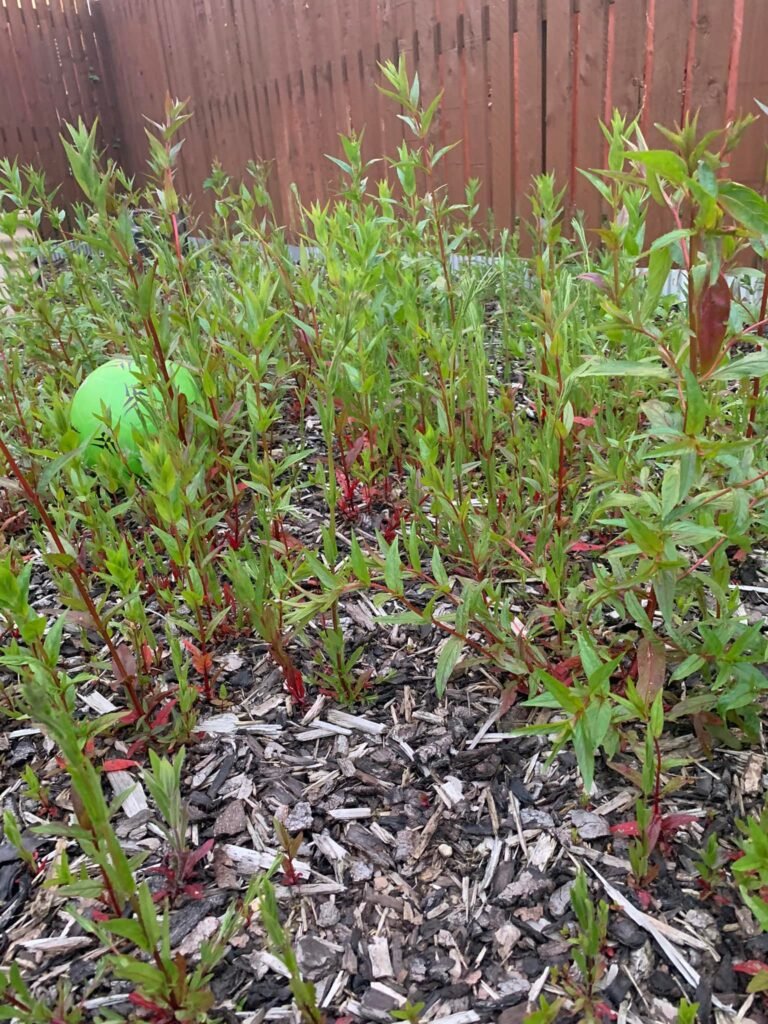
What I Do Instead
Mulch Wisely and Generously
If there’s one gardening habit I wouldn’t give up for anything, it’s mulching. Done well, it’s the quiet workhorse of a healthy border — keeping weeds at bay, feeding the soil, locking in moisture, and giving everything a visual sense of calm and care.
But not all mulch is equal, and not all mulching is done wisely.
Over the years, I’ve learned that the best mulch isn’t about smothering — it’s about supporting. I favour organic mulches that break down slowly over time: composted bark, leaf mould, well-rotted horse manure, or garden compost if you’ve got it in quantity. These materials don’t just sit on top; they gradually become part of the soil, enriching it with every shower and season.
I apply a good 5–8cm layer in late winter or early spring — thick enough to suppress most weed seedlings, but loose enough to let air and water through. And here’s the key: I treat it as an annual ritual, not a one-time fix. Topping up each year is part of the rhythm, part of working with the garden rather than against it.
Mulching this way doesn’t prevent every weed — no method ever does — but it makes the weeding that does need doing so much easier. A light tug, a quick hoe, and it’s gone. No fabric in the way. No wrestling with anchored roots. Just healthy, pliable soil that welcomes your efforts rather than fighting back.
It also gives the whole garden a sense of finish — that soft, dark backdrop that makes foliage shine and blooms stand out. In shade gardens especially, where colour can be subtle and contrast is key, a good mulch can quietly elevate everything.
And perhaps most importantly, it feeds the life in the soil. Earthworms move it, fungi thread through it, and the whole underground system gets a boost of nutrition and protection — far more effective, and far more natural, than any plastic sheet could ever be.
Focus on Dense Planting
If mulch is the garden’s duvet — protective, warming, nourishing — then plants are its true defenders. In my experience, nothing beats weeds quite like a well-planted border. Not a membrane. Not a spray. Just good, dense planting.
There’s a quiet power in filling space. When we leave bare soil, nature sees an invitation — and weeds RSVP fast. But when every inch of ground is claimed by roots that we choose, there’s far less room for the opportunists to slip in. Think of it as gardening by crowd control.
In shade gardens especially, layering becomes your best friend. Start with groundcovers — low, spreading plants like Epimedium, Alchemilla mollis, Geranium macrorrhizum. They’re the workhorses that knit the soil together, hugging close, keeping moisture in, and keeping weeds out. Then add mid-height perennials — think Heuchera, Astrantia, Brunnera — and top it off with taller structure: ferns, Hydrangeas, perhaps a Japanese maple for height and contrast.
The goal isn’t a packed jungle, but a tapestry. Each plant filling a role, each root doing its part. Over time, the gaps disappear — and with them, the chance for weeds to settle.
I often say: if you’re weeding too much, you may have a planting problem, not a weed problem. A garden with healthy competition, where desired plants dominate the space, naturally suppresses most of what you don’t want.
Of course, it takes some thought — matching the right plant to the right spot, giving them time to mature — but once established, a dense planting scheme does what fabric never could: it works with the soil, the seasons, and the wildlife. And it changes. It grows. It responds.
Gardens are meant to evolve. When we plant densely and thoughtfully, we let the garden do what it does best — thrive, and keep its own balance.
Improve the Soil, Don’t Smother It
One of the biggest shifts in my gardening life came when I stopped trying to control the soil — and started listening to it.
For years, I treated the ground like something to be managed: kept covered, kept quiet, kept in line. Weed fabric played right into that mindset — a way to block out the mess and press pause on nature. But soil doesn’t thrive in silence. It thrives in dialogue.
When I pulled up the fabric and really looked at what was happening beneath, I saw tired soil. Compressed, grey, sometimes sour-smelling — not the rich, dark, living earth I wanted for my plants. No worms. No smell of humus. Just stillness. And not the good kind.
Healthy soil is dynamic. It breathes, it shifts, it hums with invisible life. And when we let it live — when we feed it, aerate it, and keep it open to the rhythms of rain and root — it becomes our best gardening ally.
Instead of smothering the ground, I now work with it. I add organic matter like leaf mould or compost in the autumn. I mulch with materials that break down slowly and feed from above. I avoid walking on borders whenever I can, to prevent compaction. And I plant in layers that anchor the soil and keep it covered in a natural way.
The result? Fewer weeds — not because I’ve forced them out, but because the soil itself is healthier. Balanced. Strong. The microbial network (what some call the “wood wide web”) is allowed to flourish. Mycorrhizal fungi form partnerships with roots, sending out threads that pass nutrients where they’re needed most. It’s extraordinary, really — the soil listens to the plants. And it responds.
That kind of system doesn’t need a barrier to protect it. It needs care, connection, and the time to build itself up.
Fabric isolates. Healthy soil integrates.
And once you’ve seen the difference — once your garden starts responding with that quiet vigour only good soil brings — you’ll wonder why you ever thought plastic was the answer.
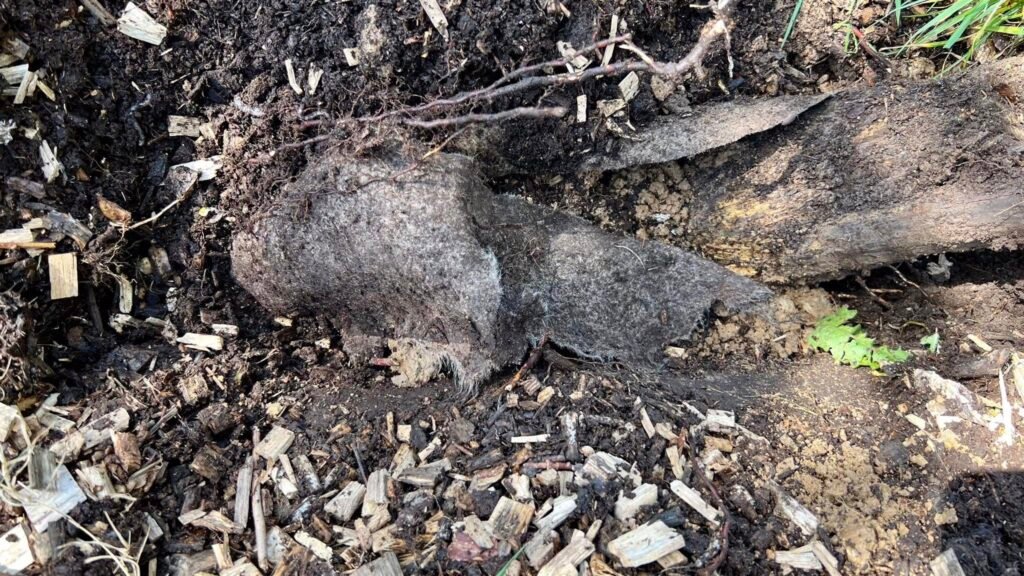
When Fabric Might Have a Place
I’ve been fairly firm so far — and for good reason. In the average garden border, weed fabric often causes more harm than good. But like most things in gardening, it’s not completely black and white. There are times and places where landscape fabric can serve a useful purpose — if you know its limits.
Gravel driveways and paths? Fair enough. In situations where you want to lay a stable, non-planted surface — a gravel parking area, for example — a heavy-duty geotextile fabric beneath the aggregate can help slow weed growth and prevent stones from disappearing into the soil. Even then, it’s not a permanent solution, and maintenance is still needed, but it has a more defined role.
Under paving or hard landscaping? Yes, fabric can act as a stabilising membrane, especially if you’re laying slabs or decking where soil movement needs controlling. In those cases, it’s part of a structural solution, not a planting strategy.
Short-term fixes in problem areas? Occasionally. I’ve used it, very sparingly, in large areas where bindweed or horsetail was taking over — just as a stop-gap to weaken the root systems while I planned a proper replanting. But even then, it’s temporary, and I monitor the soil closely.
What I don’t recommend — and this is where many go wrong — is using it beneath ornamental borders, shrubs, or perennial beds. These are living systems. They need the interaction between roots, rain, mulch, microbes, and air. Put a barrier in the middle, and the whole relationship breaks down.
So yes — there are some practical, situational uses for weed fabric. But in the context of a thriving garden? One that evolves, improves, and responds to the seasons?
Fabric isn’t the foundation. Good soil is.
A Garden That Breathes
Looking back, I understand why I turned to weed fabric. It offered a promise — tidy borders, fewer weeds, less maintenance. And for a while, it felt like it worked. But like so many quick fixes in the garden, it didn’t take long before the cracks showed.
Weeds still came. The fabric tore. The soil beneath grew tired. And I found myself working harder, not less — just in a different way. Pulling at roots I couldn’t reach. Struggling to plant. Watching the soil slip into silence.
The truth is, gardens don’t thrive under barriers. They thrive under care. Attention. Rhythm. A gardener who watches, listens, and works with the land rather than trying to lock it down.
Since removing the fabric and returning to practices that feed the soil — mulching generously, planting densely, building soil health — I’ve watched my borders come back to life. Not just in colour and growth, but in the texture of the soil, the ease of weeding, the sheer sense of balance.
It’s not always perfect. No garden ever is. But now, the ground feels alive again — connected, breathing, part of the bigger picture.
If you’re considering laying weed fabric, or battling the consequences of having done so, I hope this offers reassurance: there is a better way. A slower way, perhaps. But one that rewards you season after season, with a garden that grows stronger, not stuck.
Let the soil breathe. Let the garden evolve. Trust the process.
And if you’ve had your own weed fabric saga — I’d love to hear it. Join the conversation in the Shade Gardening Facebook group or Bishops Cleeve Gardeners Facebook group, or leave a comment below.
Because we’ve all been there. And we all learn, layer by layer, just like the soil.
